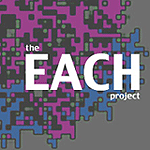

| Home | Activities | Papers | Models | Researchers |
 |  | ||||
|
|
Models
|
|
Altruism (Trait) Model The altruism model models population genetics with respect to the fitness of traits that are affected by social and environmental conditions. The model has two breeds of patch agents: altruistic agents and selfish agents. The basic premise of the model is that the selfish agents and the altruistic agents are competing for each spot in the world by entering into a genetic lottery. You can imagine these agents as plants who "seed" for a spot, and the dominant seed generally wins. Under normal (non-interfering) environmental conditions (i.e., harshness and disease at low or zero values), the selfish agents win, and the altruistic population is driven to extinction. However, when the environmental conditions are made more harsh, the altruistic population is able to survive, and even dominate the selfish population.
Cooperation (Altruistic Behavior) Model In this model, different breeds of cows compete for natural resources. Individuals that are more successful in getting the resources will reproduces more often, and will thus be more evolutionarily successful. There are two breeds of agents: greedy and cooperative cows. Every turn, each cow looks at the patch that it is currently on, and eats a unit of grass. The greedy cows eat the grass regardless of the length of the grass on the current patch. The cooperative cows won't eat the grass below a certain height. This behavior is significant because below a certain height (called the 'growth threshold') the grass grows at a far slower rate than above it. Thus, the cooperative agents leave more food for the overall population at a cost to their individual well-being, while the greedy agents eat the grass down to the nub, regardless of the effect on the overall population.
Divide-the-Cake Model This is an evolutionary game-playing model based on William Harms's "Divide the Cake Model" from Brian Skyrms's "The Evolution of the Social Contract." In this model, there are three types of agents who must divide a common resource. Only two agents are permitted on any patch at any time. Each of the agent's tries to eat a certain amount of the patch's resources. There are one-half agents, one-third agents, and two-thirds agents, each of whom try to take the respective amount of the patch's resources. If the total amount requested by both agents is greater than 100%, then both agents die. Otherwise, each agent gets his requested share of the patch's resources. Each agent then enters a reproduction lottery based on its appetite: the greater appetite, the greater the chance of reproduction. This factor gives a fitness advantage to the agents with a greater appetite that counteracts the disadvantage of having a greater appetite (viz., the higher chance of asking for too much food and dying). Each turn, every patch resets to the full amount of food.
|